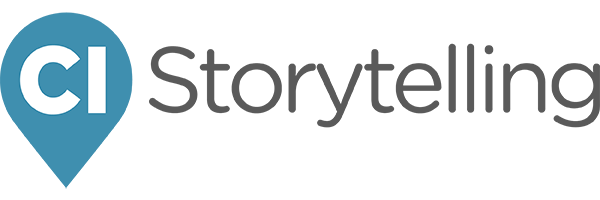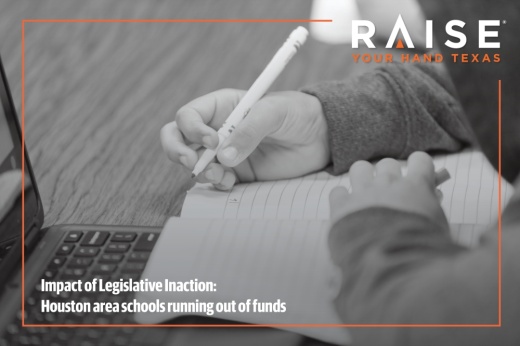While Gov. Greg Abbott is sharing news that Texas will kick off the 89th Legislative Session in January 2025 with an estimated $20 billion budget surplus, school districts across the state are running out of funds and preparing to file deficit budgets for the 2024-2025 school year.
Bob Popinski, Senior Director of Policy at Raise Your Hand Texas said districts are strapped for funding for a number of reasons, including double-digit inflation since 2019, the COVID-19 funding cliff, enrollment decline taking place in some school districts, an increase in unfunded mandates coming out of the Capitol, and inaction by the 88th Legislature.
“In a time of inflation, which every family is going through, our teachers in Texas are currently underpaid by about $7,500 compared to the national average,” Popinski said. “As of right now, it looks like Texas teacher pay will continue to fall behind. School districts that want to be competitive and try to attract and retain the best teachers in the state are losing the ability to do so.”
Filing deficit budgets in Pearland ISD
Licensed Specialist in School Psychology Crystal Carbone is the board vice president and position 3 trustee for Pearland ISD and recently gave Raise Your Hand Texas insight into the impact of the issues plaguing the Houston-area school district.
Pearland ISD filed a $12 million deficit budget this fiscal year and could be headed down the path to propose another deficit budget next year as well. Pearland ISD has had to ask the community to supplement the funding the state left off through a tax ratification election (TRE) in November 2023 and two bond propositions in the coming May 2024 election.
“I know in many of our surrounding districts, Spring Branch ISD being one of them, are already making cuts to teachers,” Carbone said. “Thankfully, we're not there yet. But that's not to say the roadmap is not ahead for us depending on what happens with state funding. It is so, so hard.”
The TRE offset operational costs by $9 million, and the district is now pursuing two bond propositions to remove infrastructure and technology costs from the operational side of the budget, freeing up funds for teacher pay. Although the bond election could help alleviate some of the cost of capital improvement issues, if it doesn’t pass, Carbone said the district will have to consider making cuts to staff while trying to stay away from cutting positions that directly impact students.
“The 88th Legislature had a huge surplus and dollars tucked away to support teachers and public ISDs, and they made the decision to hold that money hostage, based on other political or legislative agendas,” Carbone said. “It really feels like they’re undermining public education in many ways.”
Misconceptions about state education funding
Carbone said there’s also a misconception that the state passed more in education in the last legislative session than they ever have previously, but that’s a misnomer. While homestead exemptions and tax rates go down at the local level, the state has to come in and make up the difference—there’s no extra money in the pot, and districts are still held to a basic student allotment of just $6,160 per student.
When local residents review their tax bills, it seems like school districts should be doing well. But school districts aren’t funded based on tax bills, they are funded on a cost-per-student basis.
Pearland ISD has been creative about where to make its budget cuts and tried to keep them away from the classroom, but Carbone said the district has had to make adjustments to the supply budget they have available in order to do the tasks at hand in the classroom. This results in teachers having less resources in the classroom.
“Our state is playing games with teacher raises and the basic allotment needing to be increased, and we’re not making changes in those areas because of legislative agendas,” Carbone said. “Teachers are also feeling like the state legislature doesn't care about them enough to make a difference, and I think you are seeing that play out in the culture and the love for their job and the passion they have for teaching...I don't think our legislators are really hoping teachers feel that way. But it's definitely having that side effect.”
Increased student need and unfunded mandates
While Pearland ISD is trying to keep cuts away from the classroom, Carbone said unfunded mandates coming out of the Capitol, such as school security and putting armed security guards at all of its schools, or fully funded pre-kindergarten, are making financial issues worse. These financial constraints impact districts’ ability to reward and support employees and give teachers raises.
Carbone said Pearland ISD is also seeing a decline in enrollment. Demographers show the 12th grade population leaving and the kindergarten enrollment numbers are not replacing them. Experts believe skyrocketing home values in the Pearland ISD area are preventing young families from purchasing a home in the area.
In addition to enrollment decline, the district has also experienced changes in the special education sphere. Legislation recently passed directs schools to include students with dyslexia into special education programming, but there was no funding attached to the law. Carbone said in addition to the district being required to do more student evaluations, Pearland ISD is seeing a growth in the needs of students with behavioral concerns, which the district needs support to address.
“There are a lot of issues that funding could address,” Carbone said. “In addition to the new special education changes, you have an increase in inflation and insurance costs, the cost of paper—all of those things are increasing exponentially. And the needs of students are increasing. Getting funding is like squeezing blood from a turnip: it just doesn't exist...The State's got to do something eventually.”
Pearland ISD is currently undergoing a curriculum audit to evaluate and optimize programs to ensure that they are using their resources efficiently.
In addition to the TRE, one of the saving graces for Pearland ISD has been the community support represented by PTAs, a robust education foundation, and booster clubs. The money from these organizations has been supplementing the district’s ability to support innovation in the classroom and extracurricular involvement that the general operating budget cannot support.
“For example, our band went to nationals, but the district couldn't pay for that,” Carbone said. “All of the funds that go to those special programs come from the Band Booster club via parents and the community. So while it looks like we're doing all of these things in Pearland ISD, that look so robust and shiny and new, those aren't coming from district coffers, those are coming from outside private entities.”
How to get involved
The $19 billion in federal funding that Texas schools received to help districts address pandemic-related learning loss expires in 2024, and the current school finance formulas are not flexible enough to meet the ongoing instructional demands or inflationary cost pressures. Texas lawmakers will have a substantial amount of funding this legislative session – over $27 billion in additional general revenue and over $13.6 billion in Texas’ Rainy Day Fund. Investing in public school students should be a priority every session, because the future of Texas depends on well-funded public schools.
In the 89th Legislative Session, the Texas Legislature has the opportunity to better fund our schools and directly improve student education across the state. Our teachers need more pay, our students need more services, and Texas deserves better educational outcomes.
Sign up here to advocate for Texas public schools during the upcoming legislative session. For more information about Raise Your Hand Texas, visit raiseyourhandtexas.org.
The above story was produced by Senior Multi Platform Journalist Summer El-Shahawy with Community Impact's Storytelling team with information solely provided by the local business as part of its "sponsored content" purchase through our advertising team.
Select your community
Support Us
News
- Austin Metro
-
Houston Metro
- Houston Metro Home
- Bay Area
- Bellaire | Meyerland | West University
- Conroe | Montgomery
- Cy-Fair | Jersey Village
- Cypress
- Heights | River Oaks | Montrose
- Katy | Fulshear
- Lake Houston | Humble | Kingwood
- New Caney | Porter
- Pearland | Friendswood | Manvel
- Spring | Klein
- Sugar Land | Missouri City
- The Woodlands
- Tomball | Magnolia
- Dallas | Fort Worth Metro
- San Antonio Metro






